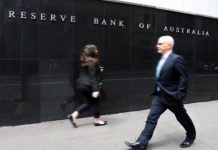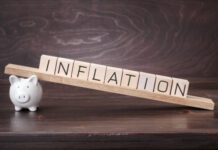Markets
The end of last week’s fireworks mark a stark contrast with today’s muted start to the trading week. Admittedly, the empty eco calendar didn’t stimulate action. In mostly technical trade, core bonds returned some of the post-BoE gains. US yields add 1.7 bps to 3.4 bps with the belly of the curve underperforming the wings. Some weakness is also normal going into the US Treasury’s mid-month refinancing operation. Tonight’s $56bn 3-yr Note sale will be followed by $39bn 10-yr Note and $25bn 30-yr bond sales tomorrow and on Wednesday. The outcome will be telling for investor appetite at current market levels and given current inflation dynamics. Additionally, US Congress on Friday finally approved the Biden’s infrastructure bill which includes $550bn in new funding. It suggests that last week’s falling projected sales in the quarterly refunding announcement will be a one-off and potentially even reversed. The German yield curve bear steepens today with yields rising by 0.4 bps (2-yr) to 4.3 bps (30-yr). Spanish newspaper El Pais published an article with ECB chief economist Lane in which he sounded dovish as usual. He referred to today’s situation as very unusual and temporary and very different from the 1970s and 1980s. Extensive monetary accommodation is still required to ensure that inflation pressure builds on a persistent basis. Tightening monetary policy at the current juncture would be counter-productive in his view as the inflation rate over the medium term is still too low. Medium- to long-term European inflation expectations in the meantime did evolve towards the 2%-target though. He added that unsustainable and undesirable price pressures are a risk factor. Markets didn’t respond to the comments, sticking to their hawkish view that even the ECB will sooner than later have to abide to persisting inflation pressures.
The US dollar last week attempted to take out 94.47/74 resistance, but failed to do so. The greenback remains slightly in the defensive at 94.20. EUR/USD changes hands around 1.1575. USD/JPY is finally capitulating in a move which we expected during last week’s core bond rally. The pair falls below first support at 113.26 even if today’s market setting doesn’t really warrant the JPY strength (slightly positive bourses; slightly weaker bonds; overall low volatility). Sterling performs remarkably well following last week’s huge BoE-setback and as EU/UK heavyweight officials step up hawkish trade rhetoric over the Northern Ireland protocol. Protagonists meet on Friday with the UK still threatening to trigger article 16 (unilaterally taking appropriate safeguard measures if the Protocol leads to serious economic, societal or environmental difficulties that are deemed to persist). News Headlines
In its November inflation report, the National Bank of Poland upwardly revised its inflation forecast for the whole policy horizon 2021/2023 compared to the previous projection in July. Average inflation now is seen at 5.3% for this year (from 5.0%), 5.8% next year (from 3.3%) and 3.6% in 2023 (from 3.4%). Poland wants inflation to be near its 2.5% with a 1.0% tolerance band. Growth was upwardly revised for this year (5.3% from 5.0%) but was seen lower in 2022 (4.9%) and 2023 (4.9%). The NBP last week raised its policy rate from 0.50% to 1.25% in order to arrest accelerating inflation. EUR/PLN today stabilized near 4.60. As is the case for the likes of the Czech koruna and the forint, the zloty still only modestly profits from the prospect of a more protracted hiking cycle.
Bank of Canada Governor Macklem said that they will keep inflation under control. He admitted that 5% inflation is uncomfortable given the 2%-target. He described the current inflation outlook of the central bank as ‘transitory but not short-lived’. This translates into inflation returning to 2% by the end of next year. With respect to monetary policy he reiterated that the BoC will probably raise rates sooner than it expected until now. Given the current economic projections the lift-off of the interest rate cycle might take place between April and September. After a modest, USD-driven setback last week, the loonie currently stabilizes near USD/CAD 1.2450.














